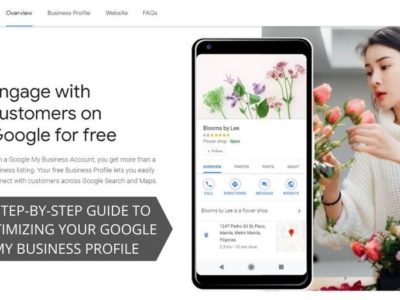Marketing experts have a lot to look forward to now that Google has recently implemented the Helpful Content Update (HCU).
As of September 9th, the tech giant confirmed that it’s finally completed rolling out the update where it will act as a sitewide signal targeting websites with high levels of unhelpful and unsatisfying content. But why is this important?
To better understand how you can rank higher on Google SERPs, you need to know how these trends are going to affect your website’s content. This includes knowing what new criteria you need to meet and how you can tweak your strategy to stay relevant.
What is Google’s Helpful Content Update?
The new changes brought by the HCU algorithm will allow people to get more original and helpful content from search queries. Instead of leading searches to websites that don’t satisfy or provide any useful information, Google wants to improve the visitor experience by making sure that you are getting content made by people, for people.
To better understand how the update works, Google’s system will now automatically identify content that seems to have little to low-added value for specific keyword searches. This applies to all results that don’t particularly seem to be helpful for users based on their search intent.
What Counts as Unhelpful Content?
Google explains that their HCU update will “reward content where visitors feel they’ve had a satisfying experience, while content that doesn’t meet a visitor’s expectations won’t perform as well”. Based on their testing, the tech giant saw that a large amount of content is primarily made to rank on search engines rather than help its users. But while the sitewide signal targets these types of websites the most, it will still look through all possible unhelpful content that seems to be present across your website.
How to Ensure Your Content is “People-First”
With the HCU update now fully in effect, websites all over the world will be starting to adjust their content strategies. While it may be a challenge for some, this brings you the opportunity to help people connect better with your brand as you work towards your goals.
To make sure that your company doesn’t lag behind or get penalized by these changes, here are a few approaches you can take to building ‘people-first’ content.
Stick to one target keyword
Keyword stuffing is an easy indicator that you’re making content to rank on search engines rather than trying to help users get what they need and want. But with the new HCU update, you’ll have to focus on total content transparency by providing exactly what you promise and sticking to it. This means focusing on a single target keyword per page and making sure the content is fully-optimized for that keyword.
Show off your first-hand experience
Establishing that you have deep knowledge and experience in the content that you deliver can help establish the trust you need to gain a loyal user base. If you want to write about a product, show your audience that you know what you’re talking about by providing original photos and deeper insights on the topic.
Using this strategy can help ensure that you aren’t just explaining a topic to users, but adding more value to it as well.
Don’t stray too far from your main topic
With people-first content, it’s best to stick to your area of expertise where you can provide more accurate and helpful information. This means staying within your niche so that both new and old users can enjoy a seamless experience where they can find what they need easily.
For example, if your website caters to tech related topics, making content about food recipes may confuse users and won’t be of much use to them.
Avoid combining too many topics into one site
Before you start making new content, establish the main topics that your website will cater to. If you want to rank better with the new HCU update, your website cannot act as a one stop solution for varying topics. This not only confuses Google’s AI that’s trying to understand your website, but the users that visit them as well.
Keep your audience’s reader experience in mind
Aside from thinking about how you deliver your content, improving user experience is also a major part of making people-first content. An easy way of doing this is to consider everything that your users may want to see without needing to look at other sources. This can mean providing more than just text-based content, but photographic and video materials too.
Provide sufficient information to answer questions
The HCU update determines if your content is helpful if it manages to teach users something new or provides them with enough information to complete their tasks. When you take the people-first approach, the goal should always be to answer questions that can resolve a user’s problem without them needing to make multiple searches.
Never answer a question without confirmed information
A successful website establishes itself by building trust and authority over its audience. The best way to do this is by avoiding claims that aren’t factual or don’t have a clear answer yet. This is especially important when you’re writing about a topic that is inconclusive or based on rumors. Remember to always include references to authoritative sources when making factual statements.
Auditing for “People-First” Content
To make things a little easier, Google listed a few key questions that you can ask yourself to determine your content’s “helpfulness.” Answering yes to the questions below means you’re probably on the right track with a people-first approach:
- Do you have an existing or intended audience for your business or site that would find the content useful if they came directly to you?
- Does your content clearly demonstrate first-hand expertise and a depth of knowledge (for example, expertise that comes from having actually used a product or service, or visiting a place)?
- Does your site have a primary purpose or focus?
- After reading your content, will someone leave feeling they’ve learned enough about a topic to help achieve their goal?
- Will someone reading your content leave feeling like they’ve had a satisfying experience?
- Are you keeping in mind our guidance for core updates and for product reviews?
Building the Right Content for Your Audience AND Google
Google remains as one of the biggest and most relied on search engines in the world. And to make sure that its services are always relevant and reliable, the tech giant behind it is always looking for new ways to better connect people to the right information. As a result of its constant shifts in the algorithm, your business also has to keep up to make sure that your content keeps ranking.
With the HCU features now fully released, you have to find new ways to focus on a people-first perspective. This can mean changing up your strategies, understanding the new terms, and producing content more regularly.
We understand that many businesses don’t have the time or resources to invest in digital marketing internally, which is why we are here to help. Spiralytics is a digital marketing company in the Philippines that specializes in providing top-quality content marketing services and more to help you boost your website performance. Reach out to us today!







